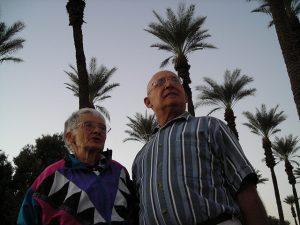Recent news and updates
How to Maintain Mental Wellness in Your Senior Years
Introduction
Aging is a characteristic piece of life, and as we become older, maintaining excellent mental health turns out to be increasingly crucial. While actual health frequently takes the spotlight, mental wellness is similarly fundamental in ensuring a top-notch life during one’s senior years. In this article, we will investigate the critical techniques to maintain mental wellness in your old years, taking inspiration from mental health influencers who have prepared for positive aging.
The Meaning of Mental Wellness in Seniors
Mental wellness incorporates close-to-home, mental, and social prosperity. It involves managing pressure, maintaining connections, and making decisions that upgrade your satisfaction. In your senior years, mental wellness is especially critical because of multiple factors:
- Emotional Resilience
The capacity to deal with life’s difficulties and return quickly from misfortune is essential for seniors. Excellent mental health empowers profound flexibility, helping seniors adapt to health issues, misfortune, and other life-altering events.
- Cognitive Function
Mental wellness is intently attached to mental capability. Staying mentally dynamic through exercises like reading, riddles, and learning new abilities can assist seniors with preserving their mental capacities and memory.
- Quality of Life
Seniors with significant mental health are bound to partake in a top-notch life. They can remain socially connected, seek after their interests, and continue to lead fulfilling lives.
- Physical Health
Mental and actual health intertwine. Seniors with solid mental wellness are bound to participate in healthy behavior, like activity, a reasonable eating routine, and normal healthcare visits.
Methodologies for Maintaining Mental Wellness
- Stay Truly Active
Normal activity is a valuable asset for maintaining mental wellness. It discharges endorphins, which can support the mind-set and lessen the gamble of sorrow. Exercises like walking, swimming, or yoga can assist with keeping both body and mind in top shape. Mental health influencers frequently stress the association between actual work and profound prosperity.
- Maintain Social Connections
Loneliness and social segregation can harm mental health. Seniors ought to effectively search out friendly interactions with family, companions, and, surprisingly, new acquaintances. Mental health influencers frequently energize the significance of maintaining solid informal organizations.
- Pursue lasting Learning
Engaging in continuous learning is a successful method for keeping the mind sharp and advancing mental wellness. Whether it’s picking up another side interest, learning an instrument, or taking courses, intellectual pursuits can give a feeling of achievement and motivation.
- Manage Stress
Stress is a piece of life, yet persistent pressure can negatively affect mental health. Practicing pressure-the-board strategies like reflection, profound breathing, and mindfulness can assist seniors with staying quiet and centered. Mental health influencers frequently share their encounters with pressure-decrease plans.
- Seek Proficient Support
Assuming seniors are experiencing symptoms of despair, uneasiness, or other mental health issues, looking for proficient help is fundamental. Mental health influencers frequently destigmatize treatment and counseling, emphasizing that seeking support is a bold move toward better mental health.
- Stay Positive
Maintaining an uplifting perspective on life can fundamentally influence mental wellness. Practicing appreciation, focusing on the present, and embracing a feeling of direction can assist seniors with finding euphoria and satisfaction in their senior years. Mental health influencers frequently share inspirational and positive messages to inspire their supporters.
Manage Constant Illness
Seniors frequently must adapt to persistent health conditions. Managing these circumstances successfully is pivotal for mental wellness. Adhering to treatment plans, staying informed, and seeking support gatherings can all add to better close-to-home prosperity.
Engage in Imaginative Expression
Innovative articulation, like artistry, writing, or music, can be a helpful source for seniors. It permits them to articulate their thoughts, process their feelings, and find satisfaction in their imaginative undertakings. Mental health influencers frequently utilize innovative articulation as a method for sharing their stories and inspiring others.
Volunteer and Give Back
Volunteering isn’t just a method for giving back to the local area but also a valuable chance to feel a feeling of direction and achievement. Helping others can support confidence and mental prosperity. Numerous mental health influencers find satisfaction in their backing work and volunteering endeavors.
- Embrace Technology
Innovation can assist seniors with staying associated with friends and family, accessing mental health assets, and participating in mentally stimulating exercises. Utilizing cell phones, tablets, and PCs can open up a universe of chances for seniors to remain mentally dynamic and socially locked in.
Inspirational Mental Health Influencers
Mental health influencers have made considerable commitments to the talk on profound prosperity in seniors and individuals, everything being equal. Their stories and support endeavors act as an inspiration for seniors looking to maintain their mental wellness. The following are a couple of influential figures who have made ready:
- Patricia Edgar
Patricia Edgar, a promoter for senior mental wellness, has spoken enthusiastically about the significance of staying dynamic and socially associated and participating in meaningful exercises in one’s senior years. Her backing has inspired numerous seniors to lead dynamic and fulfilling lives.
- John Grohol
As the organizer behind Psych Focal, John Grohol has been a vocal defender of mental health mindfulness. His work underlines the significance of seeking proficient help and reducing the shame surrounding mental health issues.
- Wendy Sue Swanson
Dr. Wendy Sue Swanson, a pediatrician, has utilized her foundation to urge a comprehensive way to deal with mental wellness, highlighting the association between physical and psychological health. She advocates for standard activity, nourishment, and a solid interpersonal organization.
- Rudy Caseres
Rudy Caseres has become a prominent promoter of mental health mindfulness, especially within the senior local area. His endeavors have urged seniors to look for treatment, decrease the shame surrounding mental health, and participate in open discussions about their close-to-home prosperity.
Conclusion
Maintaining mental wellness in your senior years isn’t just imaginable but fundamental for a fulfilling and meaningful life. The systems examined, inspired by mental health influencers, offer a guide for promoting close-to-home prosperity in seniors. Staying genuinely dynamic, nurturing social associations, embracing deep-rooted learning, and managing pressure are almighty tools to improve mental health and make a positive aging encounter. The excursion to mental wellness in your senior years is an ongoing cycle; one loaded up with open doors for development, association, and a significant feeling of satisfaction.



